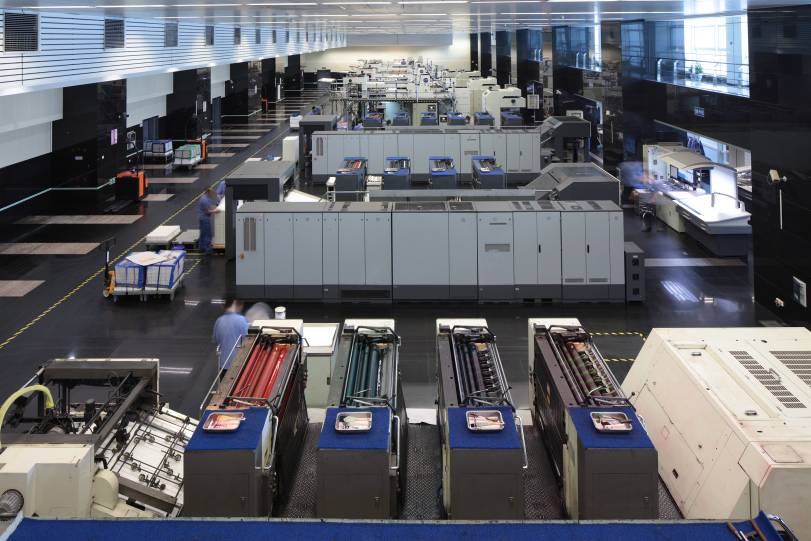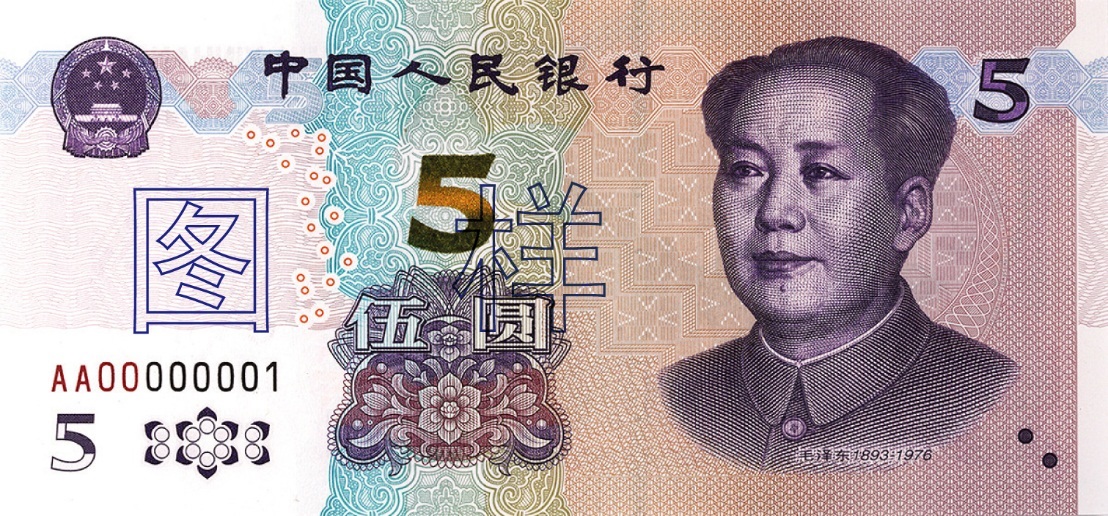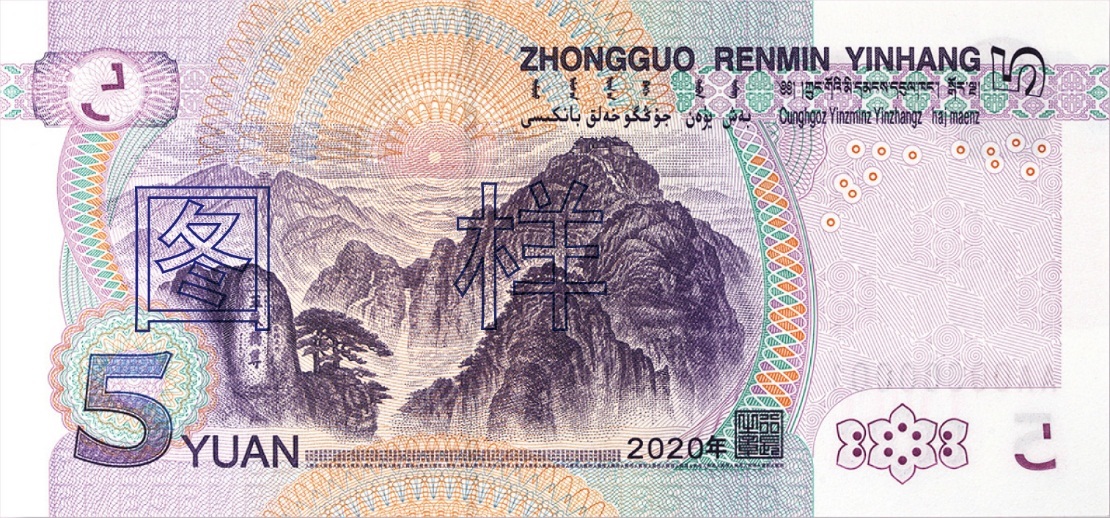An Interview with the Chairman of the Board of CBPM by Currency News
The View from China - Interview with Currency News in February 2021
As relayed to Currency News in this month’s On the Record (see pages 6-7), the Chairman of China Banknote Printing and Minting Corporation (CBPM), Mr Yang Lijie, is optimistic about the future of cash, proud of the achievements of his organisation in terms of quality, sustainability and CSR, and willing to make more friends and more partners with the industry around the world.
Whilst Sweden is most often cited as the ‘poster-child’ for the coming cashless society, in reality it is China that trend towards a world in digital payments. WeChat Pay and AliPay are making these payments a completely normal part of everyday life in China and beyond, while China’s Digital Currency Electronic Payment scheme currently being piloted is one of the world's first.
So it is good to hear that, whilst digitisation in the payments arena is inevitable, cash still has a viable and promising future in China. The fact that nearly $110 billion worth of currency was put into circulation in 2020 underscores that belief, and his view that cash still has a vital role in China in years to come.
Mr Yang Lijie outlines a wide range of topics, from how CPBM has weathered the pandemic to its priorities for the next five years. One of these priorities is sustainability – rapidly becoming one of the key issues in our industry, so it is positive to hear the proactive measures CBPM is taking in this area.
And, of course, the company hopes to reach out and work with industry players around the world. China has developed an impressive array of technology and expertise and this – coupled with extensive capacity – means we can expect to see CBPM playing a larger role on the international stage.
Quality, CSR and Partnership on the Global Stage – an Interview with the Chairman of the Board of CBPM
China Banknote Printing and Minting Corporation (CBPM) is the world’s largest manufacturer for banknotes and coins – not only producing more currency than any other printer or mint, but also offering the full gamut of production and security technology through a network of subsidiaries dedicated to R&D, features, substrates and ink, minting, printing and processing equipment, as well as production itself.

Mr Yang Lijie, Chairman of the Board of CBPM
Last year, Mr Yang Lijie was appointed to the position of Chairman of CBPM. Since the company is largely (although not entirely) focused on supplying the domestic market, publicly available information has been in short supply. Currency News™ was delighted, therefore, to be given the opportunity to speak to Mr Yang Lijie to find out more about recent developments at CBPM and future plans.
Q: Further to your appointment as Chairman of the Board of China Banknote Printing and Minting Corporation, could you introduce yourself briefly.
A: First, thank you for interviewing me.
And second, please let me introduce our company. CBPM, a large state-owned enterprise directly under the People’s Bank of China (PBC), is committed to the design, R&D, banknote printing, provides full lifecycle management of currency and serves the monetary culture industry. CBPM has 23 subsidiaries, achieving annual operating revenues of around $4 billion.
Our business primarily involves banknote printing, minting and the production of banknote paper, security threads, ink and other materials, as well as the manufacture of related equipment.
I worked most of the time at the headquarters of PBC, except for some short-term positions at the branches of the PBC and local governments. In December 2019, I joined CBPM. I’m very glad to be able to serve in the banknote printing and minting industry, and expect to embark on a new life and career at CBPM.
Q: Thanks to COVID-19, 2020 was a somewhat extraordinary year. We hear that the infection rate at CBPM was kept to zero. What measures did you take to achieve this?
A: Under the unified leadership of the Chinese government, we promptly established our working group, released the ‘Protocol on Prevention and Control of COVID-19’, for all the employees to conduct.
First, we rapidly built a full-coverage, highly efficient information network through effective use of mobile terminals, thereby accurately delivering the government’s requirements, pandemic spreading trends and prevention tips, and helping our employees substantially improve their capacity to prevent the COVID-19.
Second, we improved our office modes, such as working from home, working online, dining at different times, and strengthening disinfection and ventilation, so as to ensure the security of dining halls, offices, elevators and other crowded places.
Third, we required our employees in epidemic-affected areas to strictly undergo 14-day home quarantine.
Fourth, we took care of our employees’ physical and mental health. We provided masks, disinfectants as well as psychological guidance to our employees for the fight against the epidemic.
Q: In recent years, China has become one of the leading digital economies in the world. In particular, China is seeing great changes in payment methods and it is said that less cash is being used. What is your view on this?
A: With the rapid development of big data, cloud computing, artificial intelligence and other new-generation information technologies, China’s digital economy has been ever changing in recent years.
In terms of payment, with the expansion of the third-party mobile payment market in China, mobile payments and cash have become residents’ two main methods of payment that are functionally complementary and meet the public’s needs for diversified payment.
Non-cash payment naturally supports the development of the digital economy, and is more efficient, convenient. It better fits the spending habits of young people. Its arise and rapid development are historic trends.
However, it should be seen that cash still has irreplaceable functions and advantages.
On one hand, cash can help protect consumers’ interests such as the right to choose, the right to trade fairly, information security and property security, avoiding the ‘digital divide’ arising from non-cash payment. On the other hand, cash is more financially inclusive. Senior citizens, farmers, the low-income group, minors, the disabled, international tourists are more dependent on cash.
By the end of 2020, China’s M0 (the amount of cash in circulation), totalled around RMB 8.43 trillion. From January to December 2020, the net amount of cash put into circulation totalled RMB 712.5 billion, hitting a new high in around a decade. It can be predicted that, though the average annual growth rate of China’s M0 has been decreasing in recent years, its absolute amount will still be increasing slowly.
Cash still has special historical value in social activities, and is still an indispensable payment method for social and economic development, and for national financial stability.
In addition, according to some authorities, the amount of banknotes in circulation will still be growing at a comparatively low speed. Therefore, we should keep confident about the development of the banknote printing industry and the use of cash in the future.
In the meantime, we should face up to changes and challenges, and take proactive measures to address transformation.

One of CBPM’s Banknote Printing Workshops
Q: In recent years, CBPM has made some progress in international business. What do you plan to do next?
A: We believe that globalisation is an irreversible trend. Peace, development and win-win cooperation are upheld in the 21st century.
Following this trend, we began to ‘go global’ in 2015. We participated in international conferences, conducted international exchanges, and did business with our international peers. In this way, we established extensive and in-depth cooperation with our international friends, and provided products and services to our clients in Asia, South America, Europe, Australasia and other regions. With their trust and help, we have further integrated into the international community.
Upholding openness, inclusiveness and mutual benefit, we will go even more global and make more friends. We will expand, escalate and deepen international cooperation. We will push forward the development and application of anticounterfeiting technologies, and provide our international clients with much higher quality products and services through cooperation.
We are willing to contribute our share to the international banknote printing and minting industry and work with our peers to promote the development of the industry. We would like to invite our friends to visit us for exchanges and cooperation.
Q: CBPM has very strict quality control. How do you conduct this? What are the effects?
A: We put quality at top priority in production, strive to achieve zero defects in product quality and zero tolerance for quality problems, and systematically conduct Total Quality Management.
In the 1990s, we introduced the ISO 9001 quality management system, and rapidly gained the certification. Currently, the headquarter is responsible for the plan and supervision of total quality management, while our subsidiaries are responsible for product quality.
Apart from the pre-inspection of raw material and final inspection of finished product, we attach great importance to process quality inspection. We use the inspection equipment and software made by ourselves to achieve quality assurance. For banknote printing inspection, we have applied automatic inspection techniques to offline offset printing, online intaglio printing, numbering, coating, sorting, etc. For minting, we have online inspection for blanks, coins and packing.
Q: ‘Green’ production has become an issue of concern to major banknote printing and minting companies. What is CBPM doing in this respect?
A: We have been proactively pursuing green development as advocated by the Chinese government, executing state and local environmental protection policies and management standards, strengthening R&D into environmentally friendly technologies, advancing project implementation, and continuously improving industrial processes. We have achieved remarkable outcomes in applying environmentally sound raw materials, controlling pollutant emissions and improving end-of-pipe treatment technologies.
All subsidiaries have passed clean production audits. We can always meet national discharge standards for industrial wastewater, waste gases and residues. As a matter of fact, our standards for COD (waste water), VOCs and SO2 (waste gas) are more strict than our national standard, and are in the front rank of world.
Many subsidiaries have been recognised as demonstration green enterprises. Through concrete actions, we fulfilled our environmental protection responsibility as a state-owned enterprise.


The new 5 yuan banknote recently issued by the PBC.
This was the first circulation banknote using CBPM’s unique simultaneous double-side intaglio technology.
Q: China has made great strides in poverty alleviation. Has CBPM participated in this?
A: CBPM, as a large state-owned enterprise, has always attached great importance to social responsibility. Since 2017, focusing on education, we have made solid progress in various poverty alleviation work following the national strategies.
We contacted and independently made donations to those who are in need. By the end of 2020, our donations amounted to more than $10 million. We have organised 60-plus poverty alleviation campaigns. We assisted to build 10-plus primary and middle schools in different poor areas.
Elsewhere, we afforested an area of 30-plus hectares. In 2020, facing up to the challenges brought by COVID-19, we took active actions, donating money and materials to Wuhan and other key epidemic-stricken areas for epidemic prevention and work resumption.
In the future, we will continue to take concrete actions to fulfil our social responsibility and mission.
Q: Could you give an indication of CBPM’s development plan for the next five years?
A: The next five years will be China’s 14th Five-Year Plan period, which will be a key period for CBPM to open a new chapter. We will lay emphasis on the following aspects.
First, we will stick to the theme of high-quality development, take product quality enhancement and operating efficiency as the objective, attach greater importance to R&D and innovation, and improve CBPM’s informatisation, digitalisation and intellectualisation capabilities and levels.
Second, we will keep pursuing transformation-oriented development, and remould CBPM from simply a banknote printer into an integrated cash service provider, optimising our supply chain, prolonging our industry chain, and enhancing our value chain.
Third, we will actively adapt to the requirements for the development of the digital economy, and take vigorous action to facilitate the overall arrangement of digital currency and financial technologies based on CBPM’s core functions and missions.
Fourth, we will give play to CBPM’s core capabilities and advantages, and will actively boost the development of the high-end anti-forgery printing and the monetary culture industry.
At last, CBPM will continue to strengthen international exchanges and cooperations, and we hope to establish partnerships with more international peers and clients and work with our friends to overcome the adverse effects of the COVID-19 epidemic, and to promote the development of the international banknote printing and minting industry with concerted efforts.